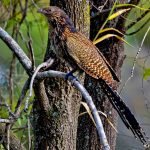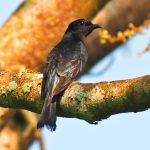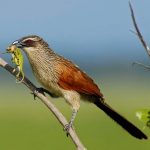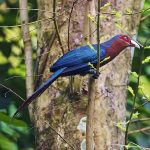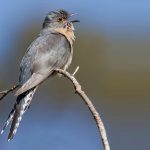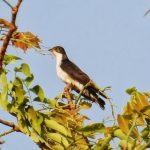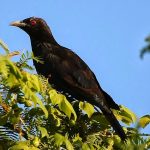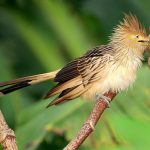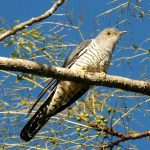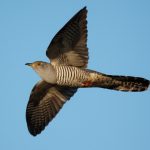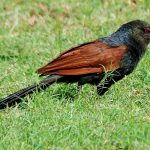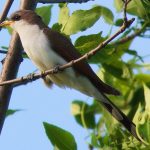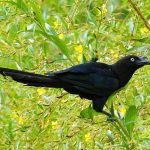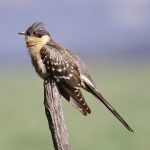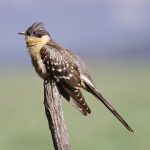Dideric cuckoo
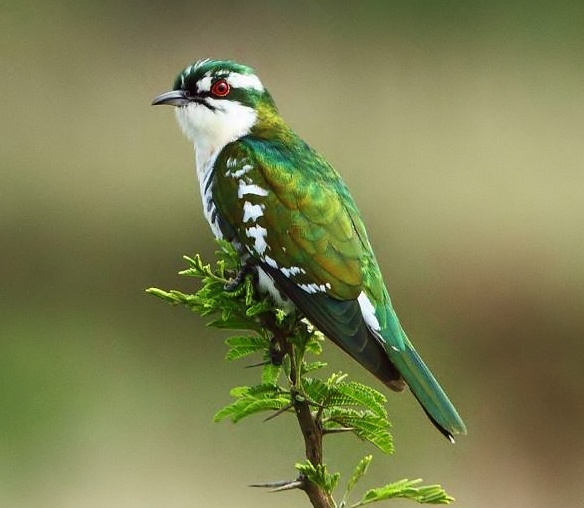
 |
| Photo by Adam Riley (Stellenbosch Birds) |
Common name:
dideric cuckoo (en); cuco-bronzeado-maior (pt); coucou didric (fr); cuclillo didric (es); goldkuckuck (de)
Taxonomy:
Order Cuculiformes
Family Cuculidae
Range:
This species is found in sub-Saharan Africa, from southern Mauritania, Mali, Niger, Chad and Sudan to South Africa.
Size:
These birds are 18-20 cm long and weigh about 35 g.
Habitat:
The dideric cuckoo is generally found along the edges of tropical forests, dry savannas and scrublands, hot deserts, rural gardens and parks. They occur from sea level up to an altitude of 2.400 m.
Diet:
They mainly feed on caterpillars, but also termites and sometimes the eggs of their hosts.
Breeding:
Dideric cuckoos breed in October-March. They are brood parasites, laying their eggs on the nests of other birds, namely weavers, sparrows, wagtails, tit-babblers, buntings, cisticolas, robins and flycatchers. They remove the eggs of the host and lay 1-2 eggs per nest, laying up to 24 eggs per breeding season. The eggs are incubated by the hosts for 19-22 days and within 3 days of hatching the chicks eats any other eggs or chicks that were not present at the time of laying. The chicks fledge 21-24 days after hatching.
Conservation:
IUCN status – LC (Least Concern)
This species has an extremely large breeding range and is reported to be generally common throughout much of this range. The population is suspected to be stable in the absence of evidence for any declines or substantial threats.
